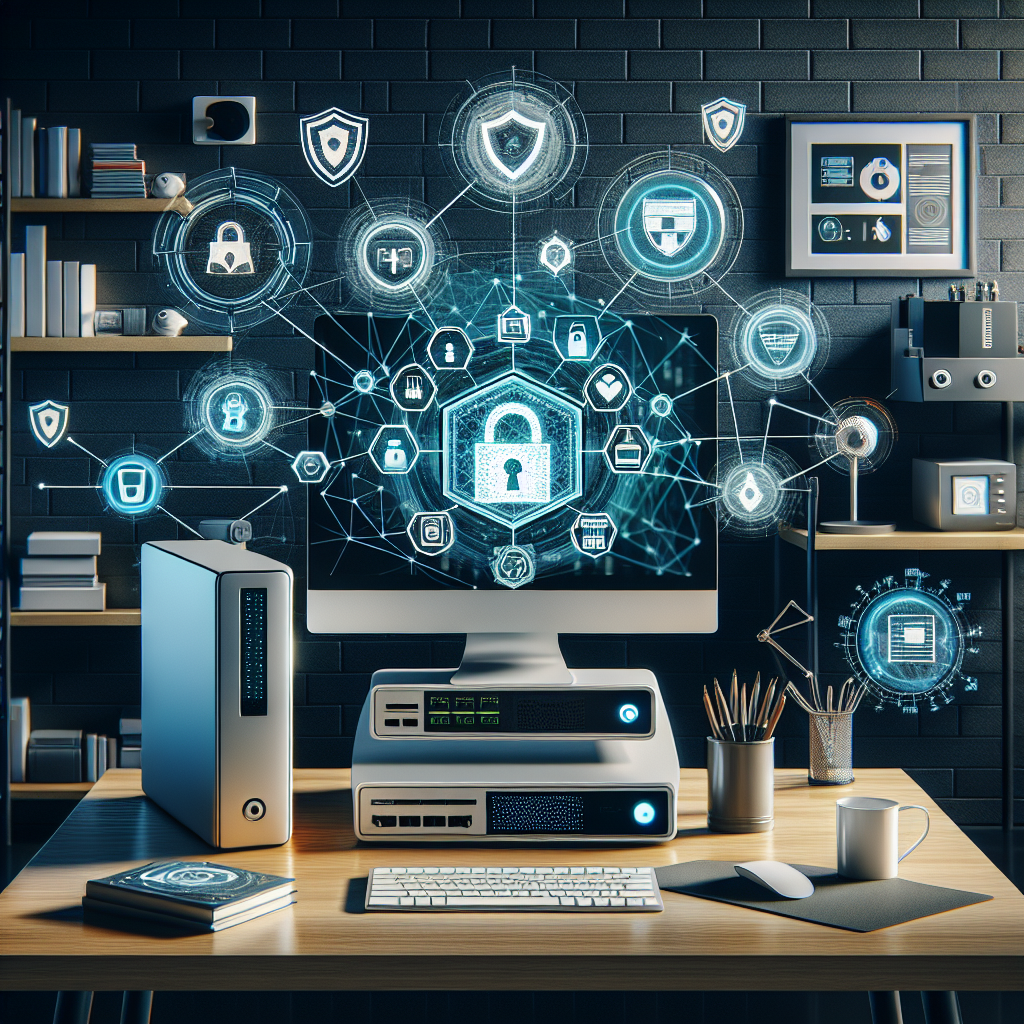In today’s digital age, the protection of our home network is of utmost importance. Fortunately, with the rise of self-monitoring security systems, homeowners now have more control over safeguarding their personal data and devices. Self-monitoring security tips and tricks offer a comprehensive guide to keeping your home network safe from potential cyber threats. Whether it’s setting up strong passwords, using two-factor authentication, or regularly updating software, this article will provide valuable insights on how to fortify your digital fortress. Join us on a journey to a safer and more secure online experience with self-monitoring security tips and tricks.
Understanding Self-Monitoring Security

– ### Definition of Self-Monitoring Security
Self-monitoring security refers to the proactive approach individuals take to safeguard their home network from potential cyber threats. It involves utilizing tools and techniques to continuously monitor network activity, identify vulnerabilities, and respond promptly to any suspicious behavior.
-
Importance of Self-Monitoring
Self-monitoring security is crucial in today’s digital age where cyber attacks are becoming increasingly sophisticated. By actively monitoring their home network, individuals can detect unauthorized access attempts, malware infections, or unusual patterns that may indicate a breach. This proactive stance can help prevent data breaches, identity theft, and financial loss.
Setting Up Self-Monitoring Systems
Self-monitoring security systems provide homeowners with the ability to oversee their home network and ensure its safety. To set up an effective self-monitoring system, it is crucial to follow these key steps:
-
Choosing the Right Security System
Selecting the appropriate home security system is the first step towards establishing a reliable self-monitoring setup. Consider factors such as the size of your property, the level of automation desired, and the integration capabilities with other smart devices. Opt for a system that offers features like real-time alerts, remote access, and encryption to safeguard your network effectively.
-
Installing Cameras and Sensors
Installing cameras and sensors strategically around your property is essential for comprehensive monitoring. Place cameras at entry points, such as doors and windows, as well as in common areas to capture any suspicious activity. Utilize motion sensors to detect movement and trigger alerts, enhancing the overall security of your home network.
-
Connecting to Monitoring Apps
Connecting your security system to monitoring apps enables you to keep tabs on your home network from anywhere at any time. These apps allow you to view live footage, receive notifications, and control settings remotely. Ensure that the monitoring apps are compatible with your security system and offer secure access to prevent unauthorized entry into your network.
Securing Your Network
When it comes to safeguarding your home network, there are several essential steps you can take to enhance its security. Here are some key strategies to consider:
- Creating Strong Passwords: One of the fundamental measures to fortify your network security is by setting up robust passwords. Avoid using easily guessable passwords such as “123456” or “password.” Instead, opt for complex combinations of letters, numbers, and special characters. Make sure your passwords are unique for each device and service to prevent a single breach compromising all your accounts.
- Enabling Two-Factor Authentication: Two-factor authentication provides an extra layer of security by requiring not only a password and username but also something that only the user has on them, i.e., a piece of information only they should know or have immediately to hand – such as a physical token. By enabling this feature, even if a hacker manages to obtain your password, they would still require the second factor to access your network, significantly reducing the likelihood of unauthorized access.
- Updating Firmware Regularly: Keeping your network devices’ firmware up to date is crucial for addressing security vulnerabilities and ensuring optimal performance. Manufacturers frequently release firmware updates that patch known vulnerabilities and enhance device security. Regularly check for updates on your router, smart devices, and any other network-connected equipment, and promptly install the latest firmware to mitigate potential security risks.

Monitoring and Analyzing Data
In the realm of self-monitoring security for a safe home network, the process of monitoring and analyzing data plays a crucial role in identifying and mitigating potential threats. By actively engaging in reviewing security alerts, analyzing suspicious activity, and regularly checking system logs, homeowners can enhance the security posture of their network.
- Reviewing Security Alerts:
- Security alerts serve as the first line of defense in detecting any unusual or malicious activities within the home network. It is imperative to regularly review these alerts to stay informed about any potential security breaches or vulnerabilities. By promptly addressing security alerts, homeowners can prevent cyber threats from escalating and safeguard their network from unauthorized access.
- Analyzing Suspicious Activity:
- Delving deeper into any suspicious activity identified within the network is essential for understanding the nature and extent of potential security risks. By analyzing patterns of suspicious behavior, such as unauthorized access attempts or unusual data transfers, homeowners can proactively respond to security incidents and implement necessary countermeasures to protect their network and sensitive information.
- Regularly Checking System Logs:

- System logs serve as a valuable source of information for monitoring network activity and identifying any anomalies or irregularities. Regularly reviewing system logs enables homeowners to track user actions, network traffic, and system events, providing insights into potential security incidents or vulnerabilities. By maintaining a proactive approach to checking system logs, homeowners can detect and address security issues in a timely manner, bolstering the overall security of their home network.
Enhancing Physical Security Measures
When it comes to safeguarding your home network, enhancing physical security measures is a crucial aspect that should not be overlooked. By implementing the following strategies, you can fortify the overall security of your home network and minimize the risk of unauthorized access:
- Securing Entry Points: One of the primary steps in enhancing physical security is to secure all entry points to your home. This includes doors, windows, and any other potential access points that could be exploited by intruders. Ensure that all entry points are equipped with sturdy locks and consider installing additional reinforcements such as deadbolts or security bars to further deter unauthorized entry.
- Installing Smart Locks: Smart locks offer a high level of convenience and security by allowing you to control access to your home network remotely. These advanced locking systems can be integrated with your home automation system, enabling you to monitor and manage entry permissions from your smartphone or computer. Additionally, smart locks often come with features such as activity logs and tamper alerts, providing you with real-time updates on any suspicious activities.
- Implementing Motion Sensor Lights: Motion sensor lights are an effective deterrent against potential intruders by illuminating dark areas around your home network whenever motion is detected. By strategically placing motion sensor lights near entry points and vulnerable areas, you can enhance visibility and detect any unusual movements outside your home. This not only acts as a preventive measure but also alerts you to any potential security threats in real-time.
By incorporating these physical security measures into your home network setup, you can create a robust defense system that safeguards your personal information and devices from unauthorized access.
Educating Family Members
- Teaching Security Best Practices
It is essential to educate all family members about the importance of security best practices to maintain a safe home network. This includes emphasizing the significance of creating strong, unique passwords for each device and account, regularly updating software and firmware to patch vulnerabilities, and being cautious while clicking on links or downloading attachments from unknown sources. By instilling these practices, the risk of falling victim to cyber threats can be significantly reduced. - Establishing Emergency Protocols
In addition to teaching preventive measures, it is crucial to establish clear emergency protocols in case of a security breach or suspicious activity on the home network. Family members should be aware of whom to contact, such as the internet service provider or a designated IT support person, and how to disconnect devices from the network if necessary. Having predefined steps to follow during emergencies can help mitigate potential damages and expedite the resolution process. - Conducting Regular Security Drills
Regular security drills can reinforce the importance of vigilance and preparedness among family members. These drills can simulate various scenarios, such as identifying phishing emails, detecting unauthorized access attempts, or recognizing signs of malware infection. By practicing responses to different security threats, family members can sharpen their skills in identifying and addressing potential risks, ultimately enhancing the overall security posture of the home network.
FAQs: Self Monitoring Security: Tips and Tricks for a Safe Home Network
What is self monitoring security and why is it important for my home network?
Self monitoring security refers to the practice of actively monitoring and managing your own security measures to protect your devices, data, and network from potential threats. It is important for your home network because it allows you to identify and address vulnerabilities in real time, rather than relying solely on reactive solutions after an incident has occurred.
What are some tips for implementing self monitoring security in my home network?
Some key tips for implementing self monitoring security in your home network include regularly updating your software and firmware, using strong and unique passwords, enabling multi-factor authentication, utilizing a virtual private network (VPN) when accessing sensitive information, monitoring network traffic for suspicious activity, and staying informed about the latest security threats and best practices.
Are there any tools or software that can help with self monitoring security?
Yes, there are several tools and software available that can help with self monitoring security for your home network. Some popular options include antivirus programs, firewalls, intrusion detection systems, network monitoring tools, password managers, and secure messaging apps. It’s important to research and choose the right tools for your specific needs and devices.
How often should I conduct security checks on my home network?
It is recommended to conduct security checks on your home network regularly, ideally at least once a month. This can help you identify any potential threats or vulnerabilities early on and take necessary action to protect your devices and data. Additionally, it’s important to monitor your network more frequently during times of increased online activity or when you’ve made changes to your network setup.